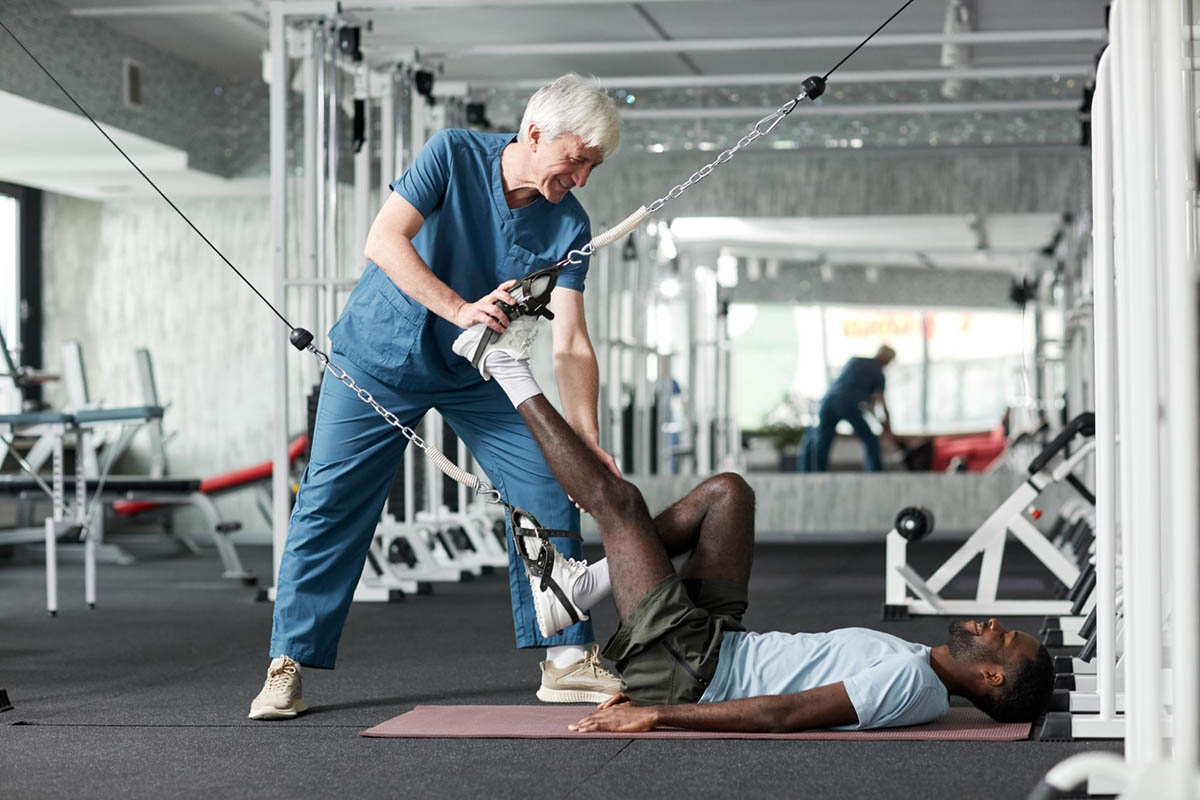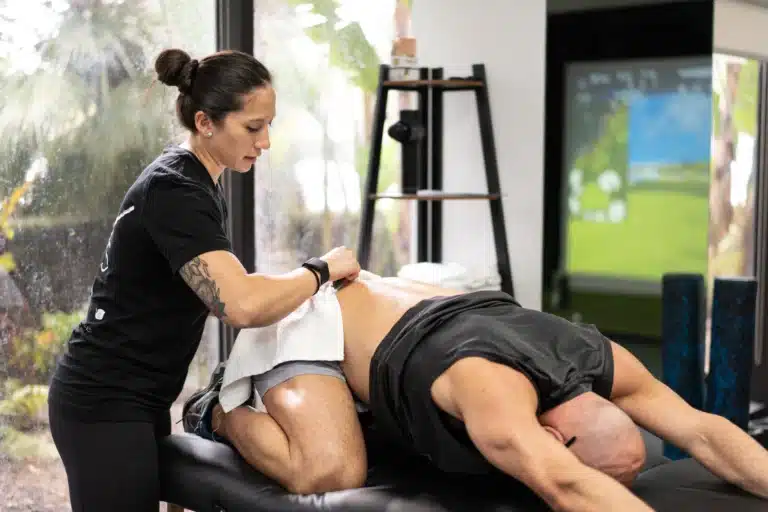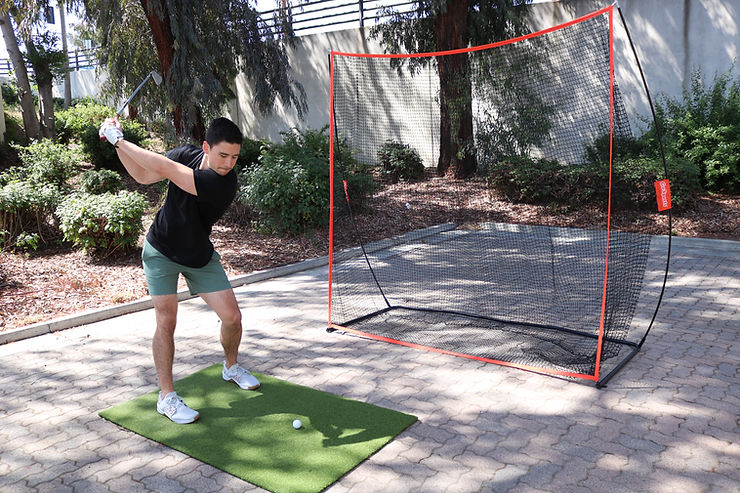Physical therapy is essential for recovery and maintaining wellness, particularly for those dealing with pain, injuries, or mobility issues. Physical therapists, also known as movement experts, offer guidance on body mechanics, alignment, and preventive care to help you recover effectively and safely. Knowing when to see a physical therapist can significantly impact your physical health, reduce the need for prescription pain medications, and prevent conditions from worsening.
1. If You Have Persistent Pain
Persistent pain, especially if it lasts longer than a few weeks, may indicate an underlying issue that requires specialized care. If you’re wondering, “how do I know if I need physical therapy,” pain that lingers or worsens without relief can be a clear sign. Pain that lingers or recurs, such as a dull and recurring pain in the lower back, joints, or neck, can point to musculoskeletal issues, joint alignment problems, or chronic conditions like arthritis. In 2021, approximately 20.9% of U.S. adults—around 51.6 million people—reported experiencing chronic pain, while 6.9% (or about 17.1 million individuals) faced high-impact chronic pain, meaning their pain severely restricted daily activities. Persistent pain is often related to poor movement patterns or joint misalignment, which physical therapists can address through a customized physical therapy program.
Therapists create a personalized treatment plan that includes a range of techniques, such as pain management strategies, muscle strengthening exercises, and mobility restoration. By pinpointing the root cause of your pain, a physical therapist can design a tailored treatment plan that reduces pain, improves your range of motion, and enhances your overall quality of life. Seeking physical therapy early can prevent minor pain from escalating into chronic issues that affect your physical function long-term.
2. If You Have Pain During Daily Activities
Daily activities such as bending, lifting, sitting, and walking should not cause pain. If simple tasks become painful or difficult, it could signal a need to reassess your movement patterns, posture, or muscle strength. Pain during daily activities often indicates issues with biomechanics or body mechanics, which are essential for maintaining proper alignment and preventing further damage. A physical therapist can evaluate your body’s alignment and recommend adjustments to improve posture and ergonomics.
Therapists can also assess your strength and flexibility through a comprehensive fitness level assessment, helping you understand how to safely perform daily tasks. They may suggest modifications or offer proper training techniques to minimize pain and maximize strength. For example, if you’re experiencing a swollen knee or stiffness while climbing stairs, a physical therapist can develop a customized exercise plan to improve the supporting muscles and joints, reducing strain and improving mobility.
3. If You Have Limited Mobility
Limited mobility and stiffness are common in areas like the shoulders, hips, knees, or lower back and can drastically affect your daily life and overall physical function. Reduced mobility can arise from muscle tightness, chronic conditions, or previous injuries that restrict joint range of motion.
For example, post-surgical patients recovering from procedures like ACL reconstruction or arthroscopic rotator cuff repair often face limited mobility, which a customized physical therapy program can address.
Physical therapists conduct flexibility and strength assessments to determine where your limitations lie. Through mobility improvement exercises, flexibility evaluations, and targeted strengthening, they can help restore your movement and range of motion. Whether it’s difficulty bending down or limited shoulder flexibility, a physical therapist’s goal is to enhance joint and muscle function, restore physical comfort, and ultimately improve your quality of life.
4. If You Are Recovering From Injury or Surgery

After an injury, such as broken bones or torn ligaments, or surgery, such as ACL reconstruction or microdiscectomy, physical therapy is essential for complete recovery. Post-surgical conditioning and injury rehabilitation with a physical therapist help you regain strength, mobility, and flexibility. Whether it’s a minor injury or extensive surgery, an individual recovery plan ensures you are on a safe path to healing. Therapists can also provide pre-surgical conditioning to improve strength before an upcoming surgery, helping you recover more quickly afterward.
Rehabilitation with a physical therapist includes a variety of treatment modalities tailored to your condition, such as manual therapy, range of motion exercises, and strength-building routines. This personalized care aims to prevent future injuries, reduce the likelihood of compensatory patterns, and help you safely return to normal activities or sports. Working with a physical therapist during recovery can be particularly beneficial for those with chronic weakness or balance problems, as the therapist will provide a structured exercise program to rebuild strength and confidence.
5. If You Want to Improve Athletic Performance
Improving athletic performance is not solely about practicing your sport—proper biomechanics, muscle balance, and flexibility are all key components. Physical therapists assist athletes by assessing movement patterns, offering body mechanic training, and improving alignment. For those interested in sports like golf, specialized physical therapy for golf performance focuses on optimizing biomechanics, flexibility, and strength to improve your play while minimizing the risk of injury. A significant portion of individuals (62.9%) noted that physical therapy was primarily effective in addressing post-injury care and rehabilitation for returning to sports. By working on essential muscles and identifying any muscle imbalances, a physical therapist can help you optimize performance while reducing the risk of injury.
Athletes often seek physical therapy to enhance their mobility and strength, which can be invaluable for sports like running, swimming, or weightlifting. A physical therapist will assess your fitness level, strength, and flexibility and create an exercise program that improves core stability, mobility, and functional strength. This proactive, preventive care can improve your athletic performance and reduce the likelihood of sidelining injuries, helping you stay in top form throughout the season.
Benefits of Seeing a Physical Therapist Early
Many wonder, “should I see a physical therapist or orthopedic doctor?” Physical therapy can address a range of mobility and pain issues, but severe musculoskeletal injuries may require an orthopedic specialist’s assessment. Seeing a physical therapist at the first sign of discomfort or limitation can prevent minor aches and pains from becoming chronic conditions. Early intervention is a powerful tool in injury prevention, allowing therapists to address small issues before they lead to bigger, more persistent problems. A tailored physical therapy program offers exercises designed to increase strength, improve mobility, or correct improper movement patterns.
Physical therapists are movement experts who offer injury prevention strategies, alignment corrections, and biomechanics training. Their expertise helps you maintain proper movement patterns and avoid habits that lead to pain or injury. Preventive care can also reduce medical expenses by minimizing the need for prescription medications, diagnostic reports, or even surgical intervention.
At The Movement Schopp, we provide personalized care tailored to your unique needs, helping you relieve pain, improve mobility, and boost athletic performance. Our dedicated team supports you every step of the way with expert guidance to help you reach your health and fitness goals safely and effectively.
What to Expect During Your First Visit

Wondering how to see a physical therapist? Your journey often begins with a referral from a primary care provider or orthopedic doctor, although direct access to physical therapy is allowed in many areas. Your initial visit will include an in-depth evaluation where your therapist will ask about your medical history, current symptoms, and goals for therapy.
During this visit, you may be asked to perform certain movements or exercises to assess your joint range of motion, muscle strength, and posture issues. Wear comfortable clothing that allows you to move easily. Your therapist will design a personalized plan of care based on this assessment, which may include mobility exercises, muscle strengthening, and flexibility improvement strategies. You’ll receive a structured exercise program and may start with some foundational exercises to begin the healing or strengthening process.
Conclusion
Physical therapy is a valuable resource for anyone facing pain, mobility challenges, or those looking to enhance their athletic performance. Knowing when to see a physical therapist can make a huge difference in your health journey, providing effective ways to manage pain, improve function, and prevent future injuries. If you’re experiencing lingering pain, difficulty performing daily tasks, or recovering from surgery, consulting a physical therapist can set you on the right path toward healing.
FAQs
When should I get PT?
If you have persistent pain, limited mobility, or are recovering from surgery, physical therapy can help; consult a provider or go directly if allowed in your area.
How long should you see a PT for?
Duration varies by condition, but most people see improvement within a few weeks; your therapist will tailor the timeline to your needs.
How many PT sessions do I need?
Typically, six to twelve sessions are common for acute issues, but chronic conditions or post-surgical rehab may require more, adjusted as you progress.




